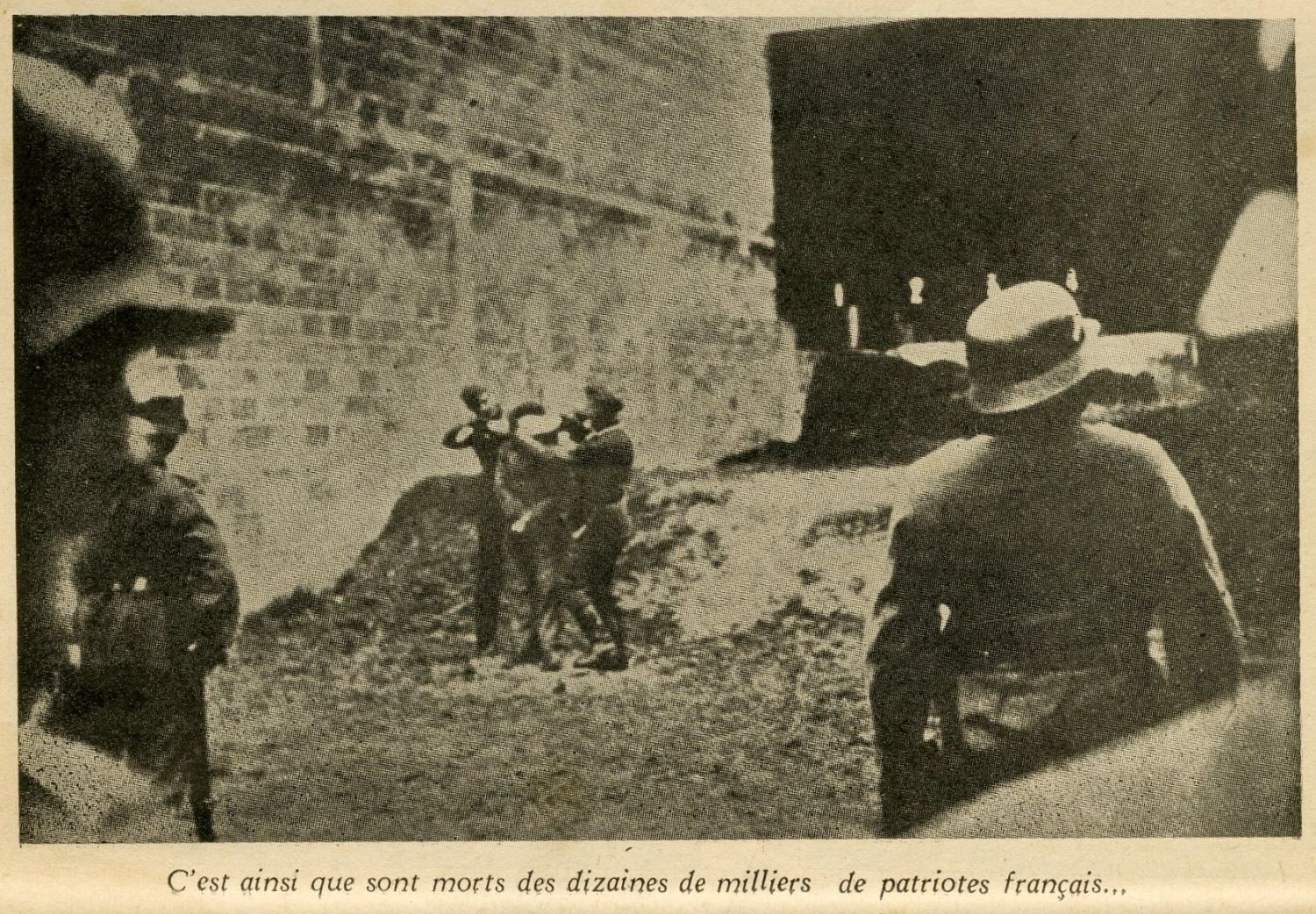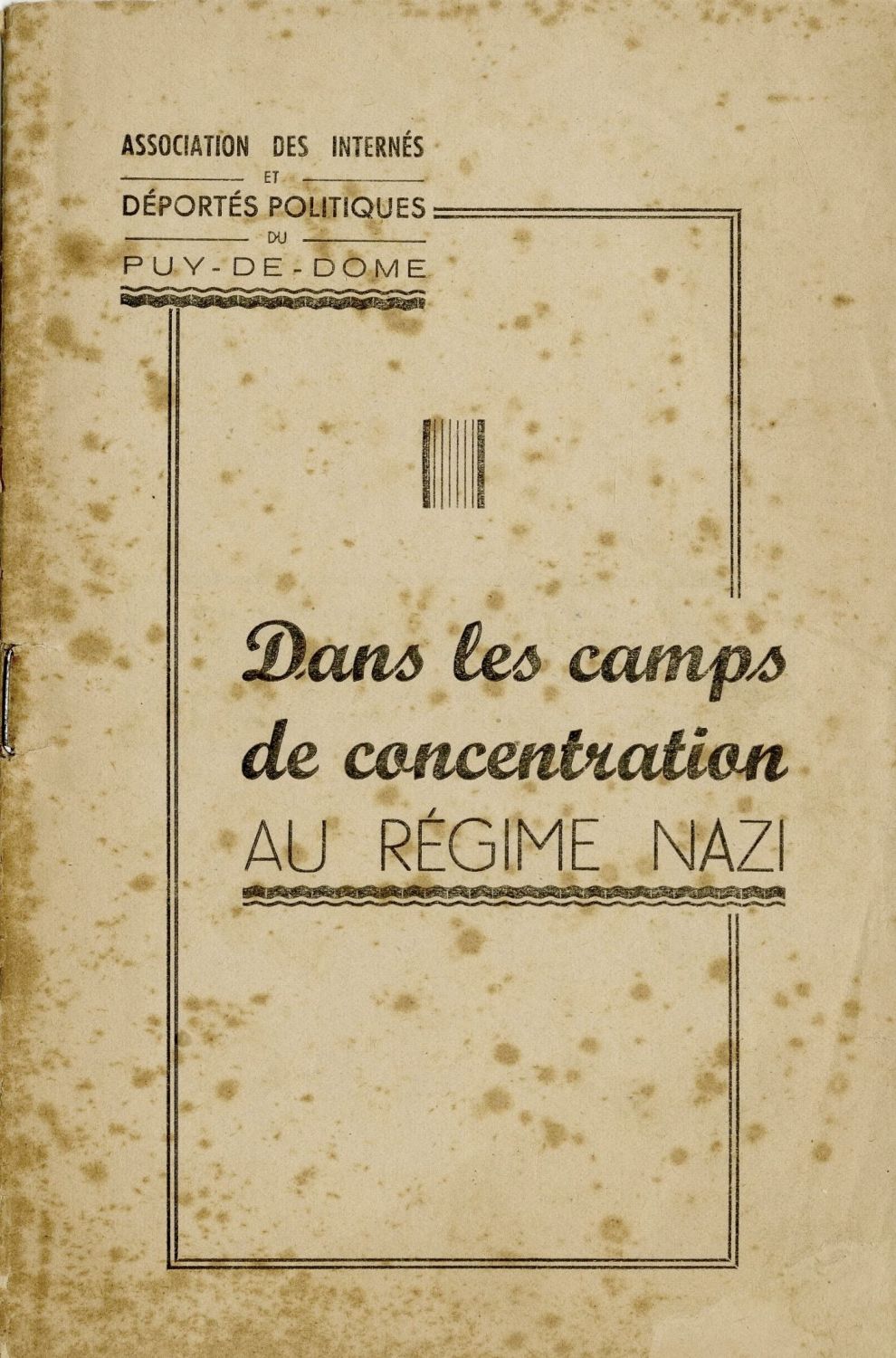La déportation dans les camps de concentration allemands et ses sequelles: une analyse médicale et sociale - the deportation to German concentration camps and its consequences, a medical and social analysis / the famine in the German concentration camps, the complications and consequences - a first report of its kind that examined in depth since the end of the war and in a period of 8 consecutive years, the physical and mental devastation caused to the camp inmates who survived the inferno, including detailed treatment recommendations. Published by Croix Rouge Danoise - Published by the Danish Red Cross, Copenhagen 1954 - First Edition. One of the first reports ever written detailing the dire consequences and side effects left by the death camps in the body and soul of the former prisoners.
Official report in collaboration with several doctors and experts who examined the side effects found in former prisoners of Nazi concentration camps - a detailed picture of the consequences of hunger and suffering experienced by the prisoners during a long period, the post-liberation syndrome of concentration camp 8 years later, follow-ups on the disease of hunger among former Danish deportees, treatment principles, and more.
In the introduction, Mogens Fog, a professor at the Faculty of Neurology at the University of Copenhagen, writes that the conclusions of the report, beyond the investigation of the truth, are also intended to help former prisoners - the survivors whose claims regarding their health condition were accepted as exaggerated at the end of the war. The doctors were able to detect the phenomena of mental disorders that came as a result of the physical suffering that the prisoners went through in the camps - something that was not given enough attention in the medical world after the war - according to him, at the time when the Danish compensation law was passed on October 1, 1945, the experts did not and could not have had any faint idea about the physical and psychological consequences of detention in the German death camps. Many of the ex-prisoners were simply unable to work, although physically they appeared to be in good condition. From this he concludes that the content of the report: "is not a mere historical record of the disasters of the Second World War, it is a summary of current events", as it reveals the deep dimensions of the psychological damage caused to the prisoners.
The report was written as a conclusion from continuous and long-term work with 120 former prisoners who were severely injured during the war years. The former prisoners were required to fill out a detailed printed questionnaire relating to the conditions before they were taken to the camps, in the camps themselves, and after the war. They were then summoned to be tested at the tuberculosis center in Copenhagen. The report provides a close examination of the terrible hygiene conditions that prevailed in the camps, the work effort required of an average prisoner, the lifestyle of an average prisoner in the camp, the daily food and calorie intake of an average prisoner, a list of all the food ingredients given to the prisoners, including spoiled food infected with bacteria and diseases, which they were forced to eat each day, a detailed comparison of the food given to the prisoners compared to the normal food of a healthy person, the reaction of the body's tissues to the terrible conditions, including the harsh working conditions, accurate data on the weight loss curve of the prisoners, and the accompanying diseases, the different reactions to torture according to the age of the prisoner and the physical condition in which he arrived at the camp , over-dehydration of prisoners, stasis, details of all types of diseases the prisoners suffered in the camps, loss of essential vitamins for their bodies, extensive detail of the mental symptoms the prisoners suffered after the war - depression, hyper-irritability, anxiety, hysteria, loss of short-term memory, decreased mental activity, apathy, lack of hygiene as a result of diseases related to the prisoner's perception of himself as unworthy of a normal life, insomnia, intestinal disorders, hot flashes, and more.
The authors of the report detail the process by which an ordinary person becomes a "Muselmann" in the camp - a nickname for a living person who physically functions as a dead person. According to the report, about 80% of those defined as "Muselmanns" did not survive the inferno. Of those who survived and were tested, one out of three managed to work for a living after the war for six months, and one out of five managed to work in some field of employment for more than a year.
The second part of the report deals with the variety of treatment methods for all those symptoms that were discovered in the former prisoners. The encouraging part of the difficult report is that the doctors' conclusion in it is that a large part of the diseases can indeed be treated, and even completely cured. The report also reviews in great detail the effectiveness of the aid organizations, and the way they treated former prisoners.
The conclusions of the report are detailed at the end. The report states that "concentration camp syndrome" is an organic physical trauma that affects a person's health both physically and mentally, and in terms of brain function. And if there were those who expressed doubt about this term, then the report that investigated the condition of the prisoners over a period of about 8 years concludes without a shadow of a doubt that this syndrome is a reality that arises as a direct consequence of the condition of the prisoners in the conditions of the camps during the war, and details the recommendations of the "therapeutic principles" of the syndrome, and recommends permanent financial assistance on behalf of the Danish government to the former prisoners of the camps, and presentation of clear criteria for the disability compensation to which they are entitled.
80 p. 22 cm. Very Good Condition.















